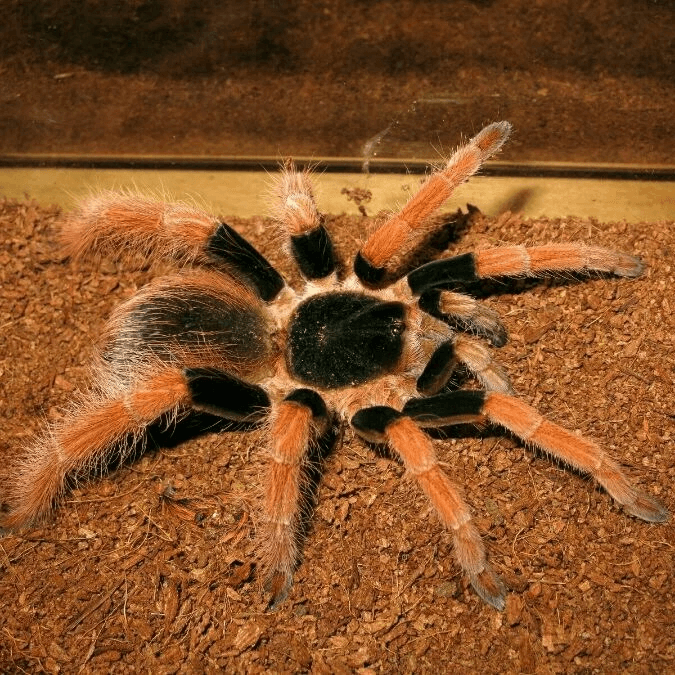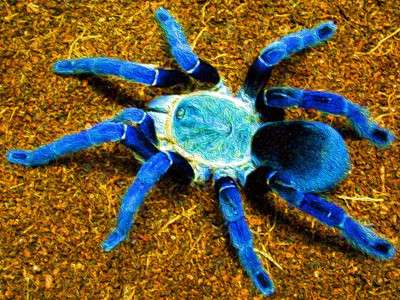
Anton Ausserer published the initial description of Megaphobema robustum, also referred to as the Colombian giant tarantula or Colombian giant redleg, in 1875. Its 6 to 8-inch wingspan allows it to devour crickets, other large insects, tiny lizards, and rodents. It is found around logs in the tropical rainforests of Colombia and Brazil.
Habitat
They can be discovered in the tropical rainforests of Brazil and Colombia. This region experiences 2,500mm of annual rainfall on average, and daily highs typically exceed 23°C. Animals like the glass frogs and flora like the Lance-tailed manakin live there, as well as plants like Cavanillesia platanifolia.
Appearance
Their opisthosoma, which is coated in orange hairs, is the same deep black color as their carapace, which is also deep black with a mild orange tint. With the exception of the femur, which is also black, the majority of the legs are an intense orange color and are covered with orange hairs.

Feeding
Generally excellent consumers on small slings of flightless fruit flies, subsequently graduating to tiny pinhead crickets. Additionally, give a variety of crickets, roaches, mealworms, and locusts to Megaphobema robustum.
Behavior
The personality of this tarantula is shy, although it is more prone to defend itself than other tarantulas from the New World. But will typically run away rather than assume a protective posture. Although they have some barbs on their rear legs, their threat position is also rather unusual. To mislead an assailant, they will either lounge with those legs or spin in a circle. Although they aren’t very active when they’re out of their hide, they are terrestrial tarantulas.
Lifespan
Males live for about four years, while females live for at least twenty years.
In Captivity
To enable burrowing, provide a deep substrate of 6–8 inches of potting soil, coconut fiber, or vermiculite. Place flower pots or cork bark in the enclosure to provide cover for the Columbian Giant Tarantula. The optimal temperature range is between 24 and 28 C (75 and 80 F), with a humidity level between 76 and 82 percent.
Table





